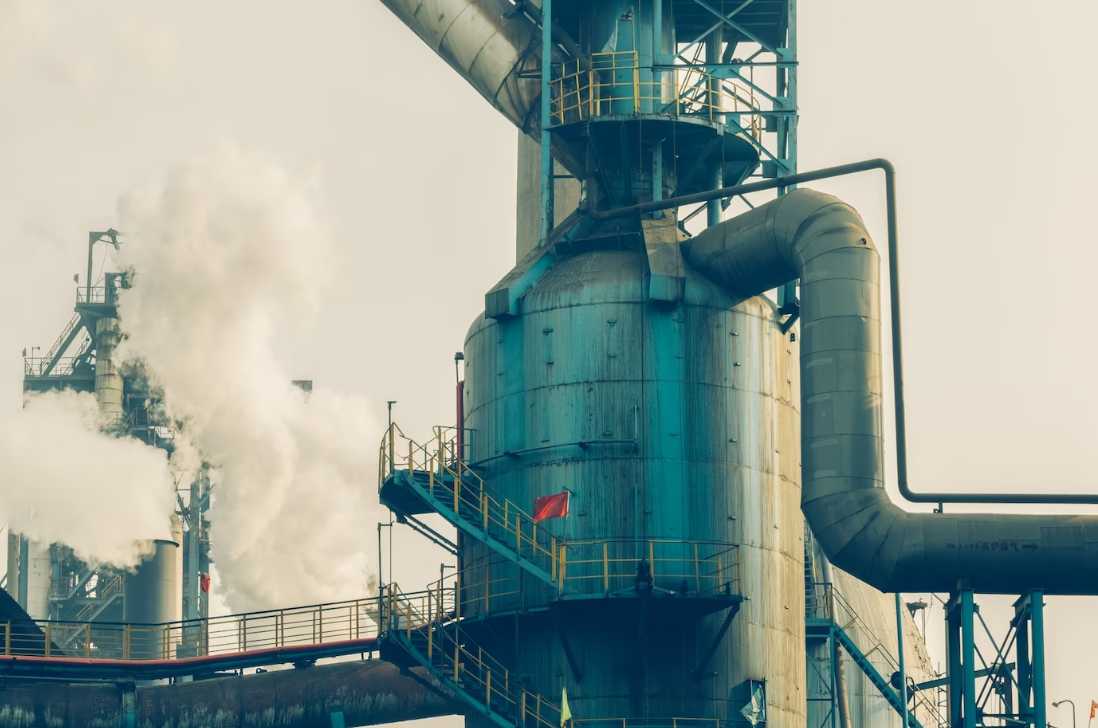Gas is used in a variety of workplaces and poses several risks. These include the risk of explosion from damaged, overheated, or poorly maintained cylinders, pipe equipment, or appliances. Carbon monoxide poisoning is also risky as the colorless, odorless gas displaces oxygen in the blood.
According to Highmark Analytics, learning to recognize the signs of a gas leak is important so you can act quickly and safely!
1. Carbon Monoxide
Carbon monoxide is a colorless, odorless, tasteless gas produced when fuel is burned. It enters the bloodstream and replaces oxygen, causing poisoning. It is the leading cause of poison-related deaths in the workplace. Several thousand American workers die each year from carbon monoxide exposure, and many suffer the debilitating effects of high-level exposure. This dangerous gas is particularly harmful to people with health problems that affect the flow of oxygen through the body, such as heart disease and anemia. It also adversely affects smokers more quickly than non-smokers.
Workers can be exposed to carbon monoxide when working in enclosed areas, especially those that are poorly ventilated. The major sources of this toxic gas include internal combustion engines, furnaces, wood stoves, charcoal grills, and space heaters. These hazards can be prevented by using appliances and equipment powered by electricity or batteries instead of gasoline, ensuring that all cylinders are properly vented, and checking ventilation systems regularly for leaks.
The Occupational Safety and Health Administration sets the permissible exposure limit for carbon monoxide at 50 ppm, averaging over eight hours. Exposures at or above this level can cause symptoms such as headache, dizziness, and nausea. Exposures at or above 500 ppm can be life-threatening.
Toxic gases are a frequent hazard on industrial job sites and commercial and manufacturing facilities. Many of these gases are flammable, making them susceptible to explosions and fires that can be disastrous for workers. In addition, some of these gases are corrosive and can damage machinery or products.
Employers must take steps to protect workers from these hazardous gases by incorporating a comprehensive workplace safety plan. The best way to do this is by eliminating the source of the hazard, but when that is not possible, engineering controls should be implemented. This includes implementing effective ventilation systems in all confined spaces and ensuring that blowers and ventilation equipment do not introduce carbon monoxide into the work area. It is also important to provide personal carbon monoxide detectors with audible alarms for all employees who may be exposed to this toxic gas.
2. Hydrogen Sulfide
Hydrogen sulfide (H2S) is a colorless gas with a pungent, “rotten egg” odor at low concentrations. It is toxic, flammable, and asphyxiant at high levels. It is often found in oil and natural gas wells, sewage treatment plants, and landfills as a result of the bacterial breakdown of organic matter in the absence of oxygen. It can also occur naturally in swamps, mudflats, and oceans.
It is absorbed through the nose or mouth and can cause a variety of effects depending on the level of exposure. Low concentrations can irritate the eyes, throat, and respiratory system and make breathing difficult for those suffering from asthma. Moderate concentration can lead to headaches, dizziness, and nausea. At high concentrations, it can depress the central nervous system leading to unconsciousness and potentially death.
While the symptoms vary according to the concentration and length of exposure, inhalation is the main route of exposure. H2S is a fast-acting poison that affects all body systems, especially the respiratory system. It is also highly flammable and corrosive.
Workers may not realize they are in danger of exposure to toxic gases because the fumes can overwhelm their senses. This is why it is important that all workplaces incorporate gas detection and monitoring as part of their safety plan. Portable detectors with continuous monitoring capabilities, such as Blackline’s G7 wireless gas detector, are particularly useful in dangerous areas where H2S can be encountered. These devices monitor long and short-term exposure to H2S and provide instant alarms to live monitoring personnel when the hazard reaches dangerous levels.
When class 2.3 flammable or toxic gases leak into an area, the percentage of oxygen in the air is significantly reduced, creating a potential asphyxiation risk. To avoid this, storage and use of cylinders should be restricted to well-ventilated areas. In addition, all cylinders should be regularly inspected for leaks, worn thread, loose connections, corrosion, and structural damage. If these are not corrected, the cylinder should be removed from service until it has been repaired and tested for leaks by qualified personnel.
3. Methane
Methane, or CH4, is the main component of natural gas. It is also a greenhouse gas, contributing to global warming by trapping heat in the atmosphere. Methane emissions from humans include waste landfills, fossil fuel extraction (the largest source, according to the EPA), agricultural activities such as livestock and rice cultivation, and coal mining. The gas is also emitted from natural sources like wetlands, oceans, and the digestive processes of termites.
In the workplace, methane is a hazard because it is an asphyxiant. It is highly flammable, with a lower ignition temperature than air and a higher boiling point than water. When it reaches concentrations of 5-15%, methane becomes an asphyxiant because it displaces oxygen in the environment. Humans can tolerate this asphyxiation for about 20 minutes without ill effects, but prolonged exposure can cause hypoxia and decomposition of the respiratory system.
The methane emission rate from the human sector has been increasing rapidly due to a combination of factors. The biggest one is climate change: polar ice and permafrost melt as the planet warms, releasing stored methane. The other major factor is agriculture: food waste and ruminant animal excrement. Fossil fuel extraction is also a major contributor to the rise in methane emissions, as are municipal solid waste landfills and energy production.
Workers are most likely to encounter this hazard in the form of compressed gas cylinders, which are classed as Dangerous Goods. These cylinders have the potential to leak and create an oxygen-deficient environment when not properly stored or serviced. Because methane is colorless and odorless, workers who enter an oxygen-deficient space will have no warning that they are in danger. To minimize this risk, gas bottles should always be properly inspected before use and regularly refilled.
Gases in cylinders can be toxic, flammable, or explosive, and many have dangerous properties at low and high concentrations. It is, therefore, important that workers are adequately trained in using these gases and that their cylinders are checked and maintained to prevent malfunctions or leaks. In addition, a gas monitor should be used to detect these hazards as they occur in order to alert workers of the presence of unsafe concentrations of these substances.
4. Nitrogen
Nitrogen can cause injury to workers in high concentrations. This can happen by causing toxic effects, such as lung irritation, reducing oxygen content to cause asphyxiation, or by acting directly on the skin, e.g., if combined with cyanide in gases such as hydrogen cyanide, bromomethane or isocyanates. The nitrogen in these compounds can be organic or inorganic. Organic nitrogen may be found in proteins, such as meat, milk, and eggs, or it can enter septic systems as a result of human or animal waste. Inorganic nitrogen can be present in a number of workplace gases, such as welding shield gas, carbon dioxide, and refrigerant gases used for spraying and pipe freezing.
Class 2.1 flammable gases, like LPG, acetylene, propane, hydrogen, and methane, are commonly used in workplaces. They are easily ignited and can form explosive mixtures with air at room temperature. When these gases leak from their cylinders into a room or confined space that doesn’t have sufficient ventilation, the percentage of oxygen in the atmosphere drops to dangerously low levels. These types of gases also pose a risk of explosion when used near heat sources.
Many workplaces utilize large amounts of nitrogen in the production of ammonia, fertilizers, explosives, and through a process known as the Haber process, nitric acid (HNO3). Nitrogen is also pumped into coal mines to prevent corrosion and explosions in the underground workings.
Nitrogen and other hazardous gases must be used in the right way to minimize the risk of injury or death for workers. This includes following the hierarchy of control, preventing exposure through proper planning, and implementing hazard controls and safe work practices. It’s also important to ensure that a comprehensive training program is in place, as this will help reduce the incidence of injury or death due to exposure to harmful gases. Training includes mandatory safety practices for entry into confined spaces; precautions when working around equipment that may contain elevated levels of nitrogen; proper use of air supply equipment; and the importance of having the correct gas monitor, ensuring that it is correctly set to recognize the presence of a nitrogen-enriched environment.



